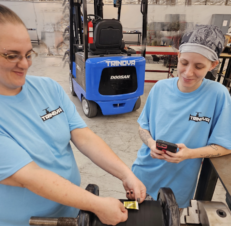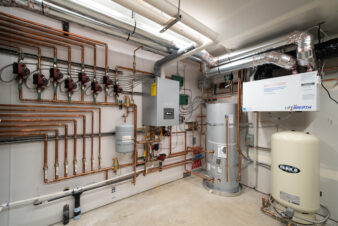Much has already been said about the safety improvements homeowners and business owners can anticipate by switching from traditional water heaters to tankless models.
Usually the discussions have revolved around the half a million scald or burn incidents happening every year, many caused by overheated tap water from an old or uncalibrated water heater. According to the Burn Foundation, more than one-sixth of all childhood hospitalizations from scalds happen because of hot tap water.
That said, another threat endangers those who use both residential and commercial tank heaters: Legionnaires’ disease. What causes Legionnaires’ bacteria to grow and how can traditional tank heaters put your home or business at risk?
“Legionella grow in still warm water.”
What is Legionnaire’s disease?
Legionnaires’ disease is actually a body of diseases – more than 43 according to the U.S. Occupational Safety and Health Administration – all caused by the same bacteria called Legionella. This pathogen grows in still warm water. If inhaled through water vapor, these bacteria could cause fever, pneumonia, comas and even death.
So, how does a standard hot water tank turn into a Petri dish for Legionella? Unfortunately, a few different ways.
How can hot water tanks produce Legionella?
Fiddling with hot water tank temperatures for energy efficiency gains could set off a chain reaction producing Legionella. Many energy experts, including the U.S. Department of Energy, recommend setting hot water tanks to 120 degrees Fahrenheit to shave a few bucks off a home gas bill. Unfortunately, Legionella can survive that temperature and prosper. OSHA recommends keeping tanks at 140 degrees, which effectively neutralizes Legionella-infected water, but hot water at that temperature could easily scald children or seniors with sensitive skin. Either way, water tank owners lose.
“Sediment collecting in water tank can encourage Legionella growth.”
Sediment collecting at the bottom of a dilapidated water tank can also encourage Legionella growth. If tank owners neglect to flush their systems at least once a year to rid systems of calcium carbonate buildup – common in areas with high water hardness – and other debris, Legionella could develop with time.
Legionella also breeds in pipes where stagnant hot water cools below that 120-degree mark. As hot water trapped between a water tank to a faucet or tap cools, it becomes more and more susceptible to infection.
Fight disease with tankless water heaters for your home
Tankless water heaters provide a number of solutions for these problems. First and foremost, automated technology controls hot water temperatures right at the source, so it’s always the perfect temperature: warm enough to prevent waterborne disease, cool enough to avoid scalds and energy-efficient enough to keep monthly bills low.
Point-of-use tankless water heaters not only forego the large cylindrical basin where Legionella can grow, but also reduce the piping needed to deliver water from a utility to the faucet, thus eliminating another threat. Water moves directly from the public system, into the home and right to the tap where it’s heated on demand
.If your hot water heater isn’t working for you, it’s working against you. Choose tankless models to prevent the spread of Legionella, protect your family from overheated water and save money on your energy bill.
Source: Does your hot water heater protect you from Legionnaires’ disease?




Join the conversation: